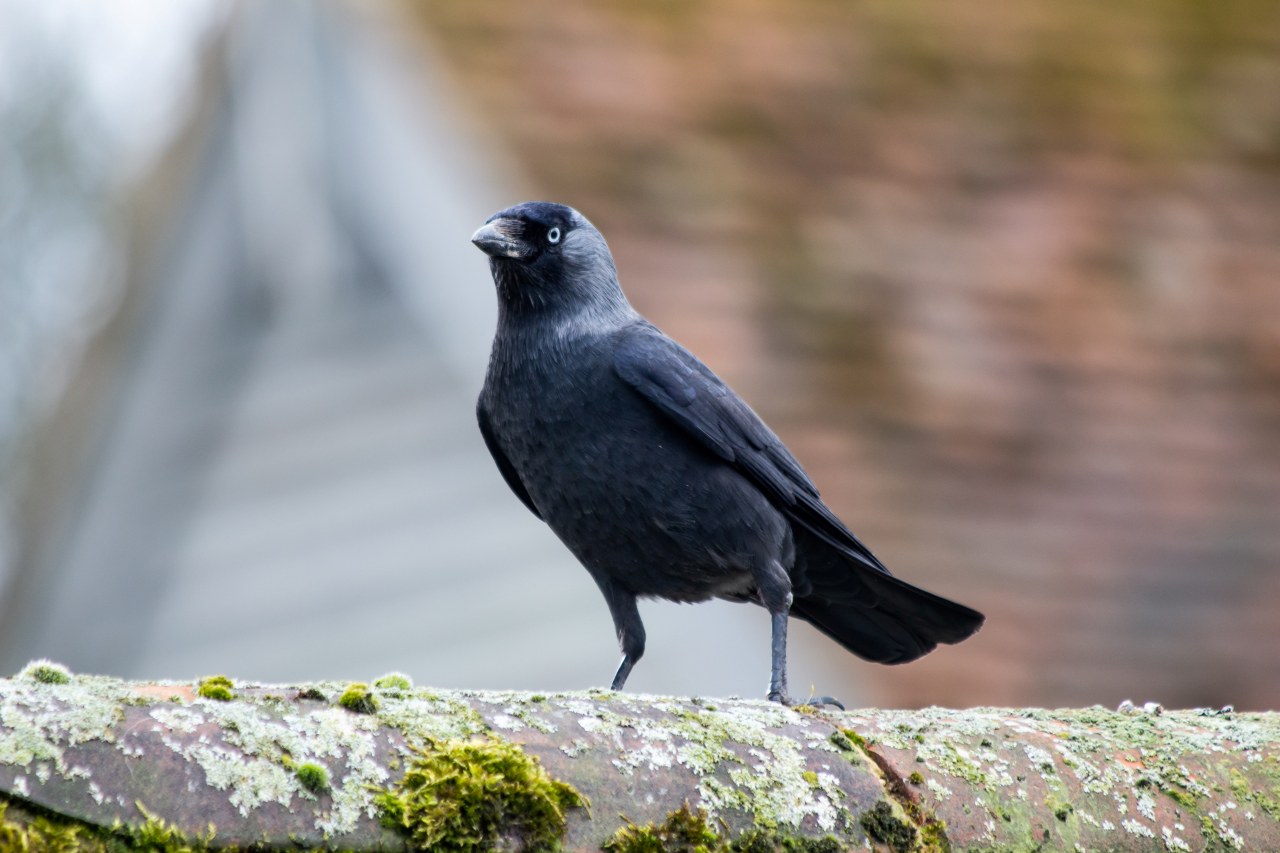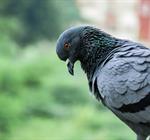
26 Mar 2025 | Apex Environmental Services (UK) Ltd
How to Get Rid of Jackdaws
Those blasted jackdaws! One minute you're enjoying your garden, the next you're watching these cheeky birds turn your chimney into their personal hotel. I've been there, and trust me, it's no picnic. These black birds might look harmless, but once they decide to move in, you've got noise, mess, and potential damage to deal with. Let's sort this out together.
Understanding Jackdaw Behavior
Why Jackdaws Are Attracted to Your Property
It's not random bad luck bringing jackdaws to your doorstep. These opportunistic birds spot what we'd call prime real estate – your home. They're after the basics: food, shelter, and safety. That bird feeder you've lovingly filled for the robins? It's a jackdaw buffet. Those unsealed bins? A jackdaw's idea of takeaway. Even that compost heap contains tasty treats for these resourceful birds.
Your house itself offers jackdaws what they desperately need – safe nesting spots. Chimneys are absolute jackdaw magnets, providing protection from predators and the elements. Roof spaces, broken tiles, and any small opening might as well have a "Jackdaws Welcome" sign posted above them. If you've got trees nearby and a water source, you've unintentionally created jackdaw paradise.
Nesting Habits and Seasonal Activity
Jackdaws kick off their house-hunting around March, with nesting in full swing by April. They're not subtle about it either – you'll spot them carrying twigs, wool, and whatever soft bits they can find to furnish their new digs. Once settled, they'll fiercely defend their patch.
The truly annoying bit? They remember good spots. So if they've nested successfully once, they'll be back next year with their extended family. A chimney filled with nesting materials isn't just irritating – it's a fire hazard. And the droppings they leave? Beyond the mess, they carry health risks you simply don't want to deal with.
Humane Ways to Deter Jackdaws
Removing Food Sources
First things first: if you're feeding them, they're staying. Secure your bins with proper lids – bungee cords work a treat if your current lids are flimsy. That bird feeder might need a holiday until your jackdaw visitors move on, or switch to feeders specifically designed to keep larger birds out.
Got fruit trees? Regular sweeping up of windfalls removes easy pickings. And for goodness' sake, don't leave the dog's dinner out all day – it's like ringing the dinner bell for every jackdaw in the neighbourhood.
Blocking Nesting Sites
Physical barriers work wonders. Jackdaws can't nest where they can't get in – simple as that. A sturdy bird deterring net by Apex Bird Control across vulnerable areas stops problems before they start. It's like putting up a "no vacancy" sign they actually understand.
Chimney caps are absolute gold for keeping jackdaws out while still letting your chimney do its job. Mesh covers work brilliantly for other openings too. Just make sure you're not sealing birds inside – check thoroughly before installation, especially during nesting season. That's a headache nobody needs.
Visual and Auditory Deterrents
Jackdaws are bright, but they're also naturally cautious. Use this against them. Shiny, moving objects make them nervous – old CDs hanging on string, strips of foil fluttering in the breeze, or even those cheap garden spinners all create unease. Just dangling something reflective near problem areas often sends them packing.
Some homeowners swear by fake predators. A plastic owl might work initially, but jackdaws aren't fools – you'll need to move it regularly or they'll soon realise it's about as threatening as a garden gnome. Wind chimes near potential roosting spots add another layer of "not worth the hassle" from a jackdaw's perspective.
Effective DIY Methods to Get Rid of Jackdaws
Homemade Bird Deterrents
You needn't spend a fortune on fancy solutions. Homemade deterrents often work just as well. String tied across popular perching spots at irregular heights makes landing awkward and uncomfortable. Jackdaws like easy access – make it difficult and they'll look elsewhere.
Old bottles hung horizontally on string create unpredictable noises in the wind. It's annoying for them, but barely noticeable for you. Metal pie tins strung together make both visual and auditory deterrents on the cheap. Sometimes the simplest solutions work best – a squirt of water from a garden hose when you spot them investigating can create a lasting negative association.
Scaring Them Away Naturally
Let nature do some of the work. Planting lavender or rosemary near problem areas creates natural barriers – jackdaws typically dislike these strong scents. Plus, your garden smells lovely as a bonus.
Many gardeners have success attracting natural jackdaw predators. Sparrowhawks won't stick around on command, but creating habitat for smaller birds of prey establishes a natural balance. There are plenty of humane methods for deterring birds that work with nature rather than against it.
Professional Jackdaw Control Solutions
When to Call Pest Control Services
Sometimes, you've tried everything and those jackdaws won't budge. It happens. Professional help becomes necessary when you're dealing with large numbers, when they've accessed living spaces, or when the mess is creating health concerns.
Professionals bring expertise and equipment beyond what's available to most homeowners. Yes, it's an expense, but weigh that against the cost of potential damage and your own sanity. They'll also ensure everything's done legally – important since jackdaws have some legal protections.
Commercial Bird Repellent Systems
The commercial market offers some impressive solutions for persistent problems. Ultrasonic devices emit sounds that irritate birds without bothering humans. Bird spikes make landing impossible on key surfaces. Professional-grade optical gels create visual disturbances only birds can see.
These systems cost more upfront but typically last years with minimal maintenance. When you're at your wits' end with DIY solutions that need constant attention, a professionally installed system starts looking like money well spent.
Preventing Jackdaws from Returning
Long-Term Strategies
Once you've evicted your unwanted feathered tenants, keep them gone through regular maintenance checks. Spots that look perfectly secure to us might still offer entry to determined jackdaws. Walk your property's perimeter monthly, looking for potential access points – especially after storms.
Changing your landscape can help too. Jackdaws love tall trees near buildings, so consider trimming back branches that provide easy roof access. Flat surfaces where they gather can be modified with angled covers that make perching impossible. Small changes add up to big differences in deterrence.
Creating an Unattractive Environment
Beyond physical changes, behaviour modifications help maintain a jackdaw-free zone. Regular activity in your garden, especially near previous problem areas, makes the location feel unsafe for cautious birds. Simply spending more time outdoors during nesting season can discourage settlement.
Regular garden clean-ups remove potential nesting materials. Something as simple as collecting pet hair after grooming (rather than leaving it for birds to find) can reduce your property's appeal. Remember, jackdaws look for easy opportunities – make your place feel like hard work and they'll move on.
Final Thoughts
Dealing with jackdaws requires patience and consistency. These aren't stupid birds – they'll test your defences and return to successful feeding or nesting sites. A mix of deterrents works better than relying on just one method, however promising it seems initially.
The good news? Once you've broken their routine and made your property unattractive, they'll likely establish themselves elsewhere and stay away. Keep up basic preventative measures, act quickly at the first sign of renewed interest, and you'll maintain the upper hand in this battle of wits. Your jackdaw-free days are ahead!


